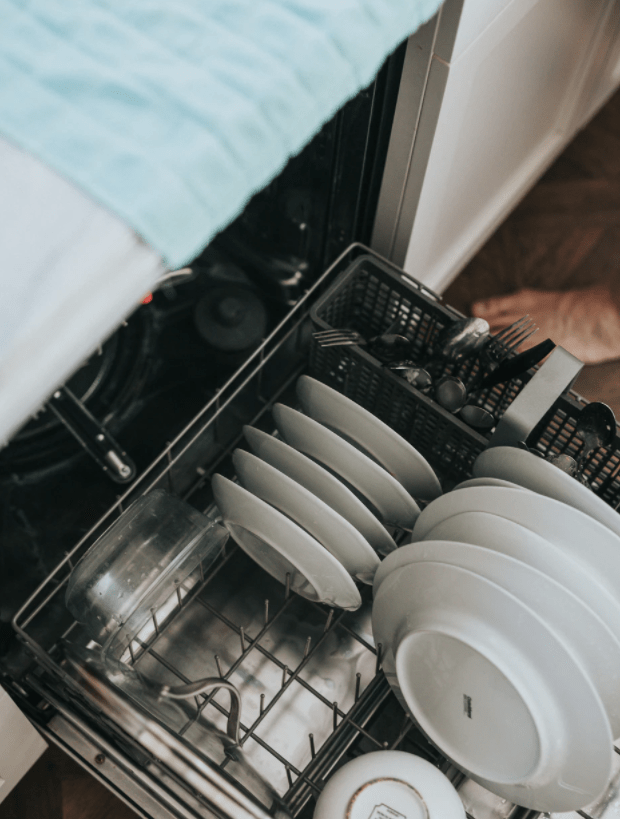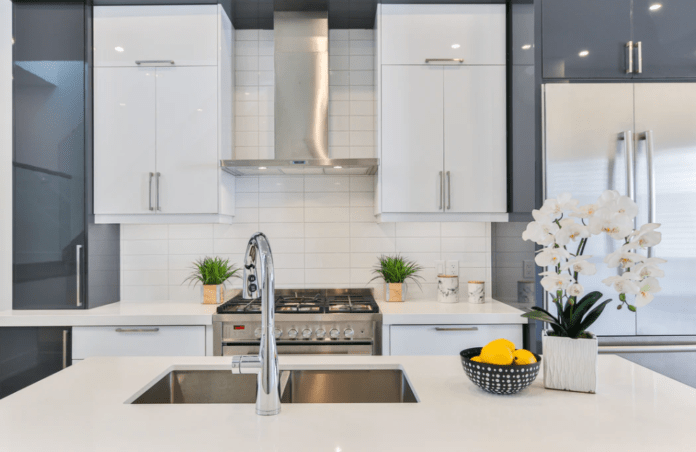The saying goes, you can’t make an omelet without breaking eggs. But when it comes to your kitchen management, it turns out that you can’t make an omelet without water. It might sound odd at first but think about it. You will need to clean your pan after you’re done cooking. You’ll also need to do the dishes and find the best spot to dry your plate, glass, and cutlery safely.
At this point, you might assume that your work is done. However, check on your kitchen in a few hours, and you’re likely to find water stains on the dishes and in the sink, a stagnant puddle on the countertop where the pan rested, and limescale lines around the faucet and sink area. Water is everywhere and gets to everything. Unfortunately, in the long term, water can also affect the safety and aesthetics of your kitchen. It’s time to regain control! Experts recommend managing your water area in the kitchen to avoid unpleasant stains and damaged to porous materials.
Invest in a quality countertop
Your work surface in the kitchen, or countertop for short, gives the structure a practical and elegant touch. Your countertop is exposed to a lot of moisture during its lifetime, from cooking, washing up, and all accidental spills. As a result, experts recommend designing a kitchen corner that can tackle water challenges. A countertop needs to meet two core functions. First of all, it should be elegant and fit naturally within your decor. BLANCO, for instance, offers an app that enables homeowners to match their sinks with their work surface, ensuring the kitchen looks homogeneous.
When it comes to water damage, professional kitchen remodelers suggest hygienic and easy-to-clean materials. Stainless steel can be a bad idea as stains as more likely to be visible on the surface. On the other hand, granite composite is highly durable and low maintenance. Being non-porous, the surface is also resistant to water stains from infiltration.
A functional faucet
The typical kitchen user can use the faucet over 10 times a day. In a family of four, it’s approximately 40 to 60 times a day. Experts warn against poor-quality taps that are likely to lead to leakage and further damage. Kitchen designers have favorite brands, such as Faucets Canada, for safety, hygiene, functionality, and maintenance. Ideally, a faucet that can take a lot of repeated use throughout the day without suffering any damage will avoid many unpleasant surprises. Limescale stains around the base and leaking water are some of the most frustrating issues with a kitchen sink.
A dishwasher that fits in a tiny space
Not every house has a large kitchen. However, experts argue that even a small kitchen should invest in a dishwasher. Indeed, as many brands have appliances designed to fit in narrow gaps, homeowners can find dishwashers that can squeeze in an 18-inch-wide gap. A dishwasher will considerably reduce water stains on the countertop and along the sink. It is also an energy-efficient choice that can significantly cut down water consumption. Doing the dishes by hand is likely to lead to water waste.

In other words, kitchen remodelers believe that if you manage your water area, you can maintain your kitchen design fresh and elegant for longer. You can’t make an omelet without breaking eggs, but you can make one without water damage.


